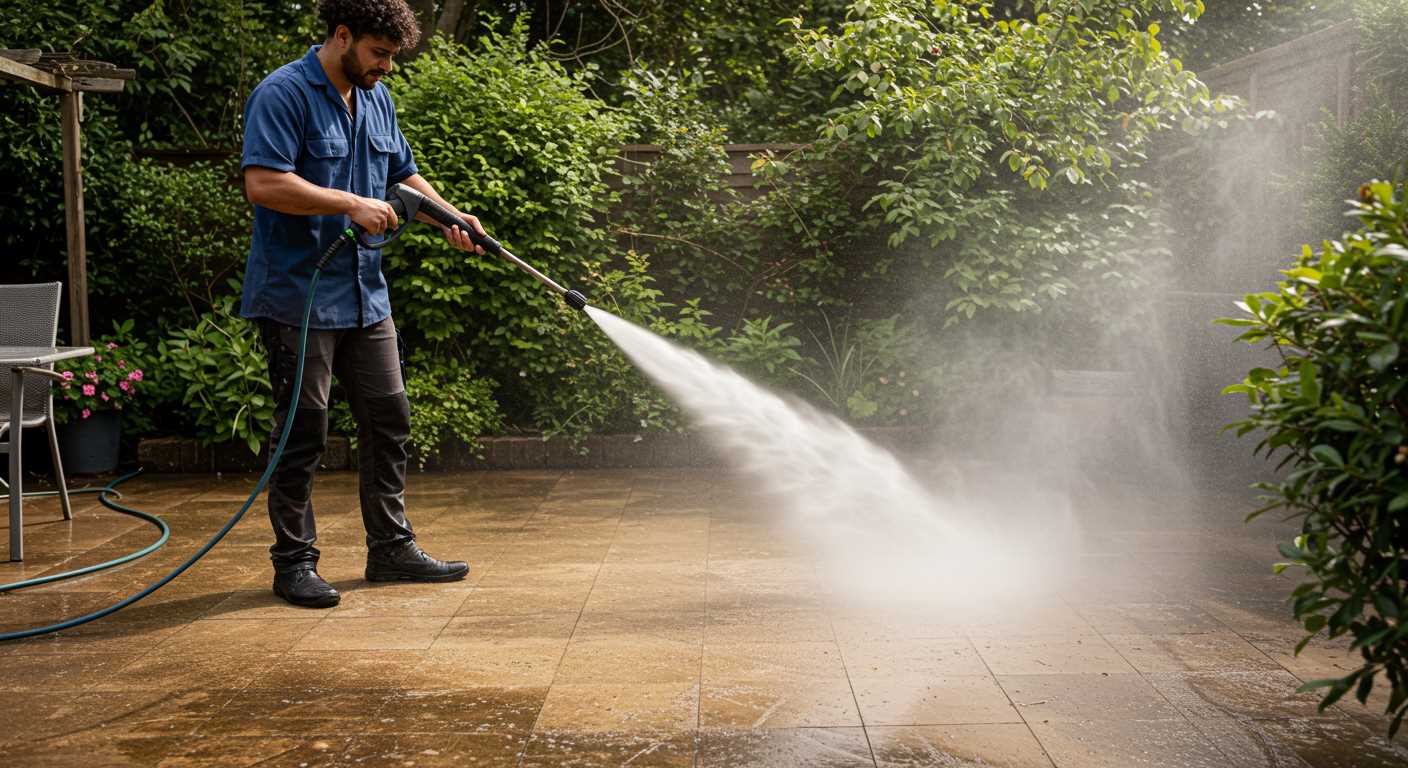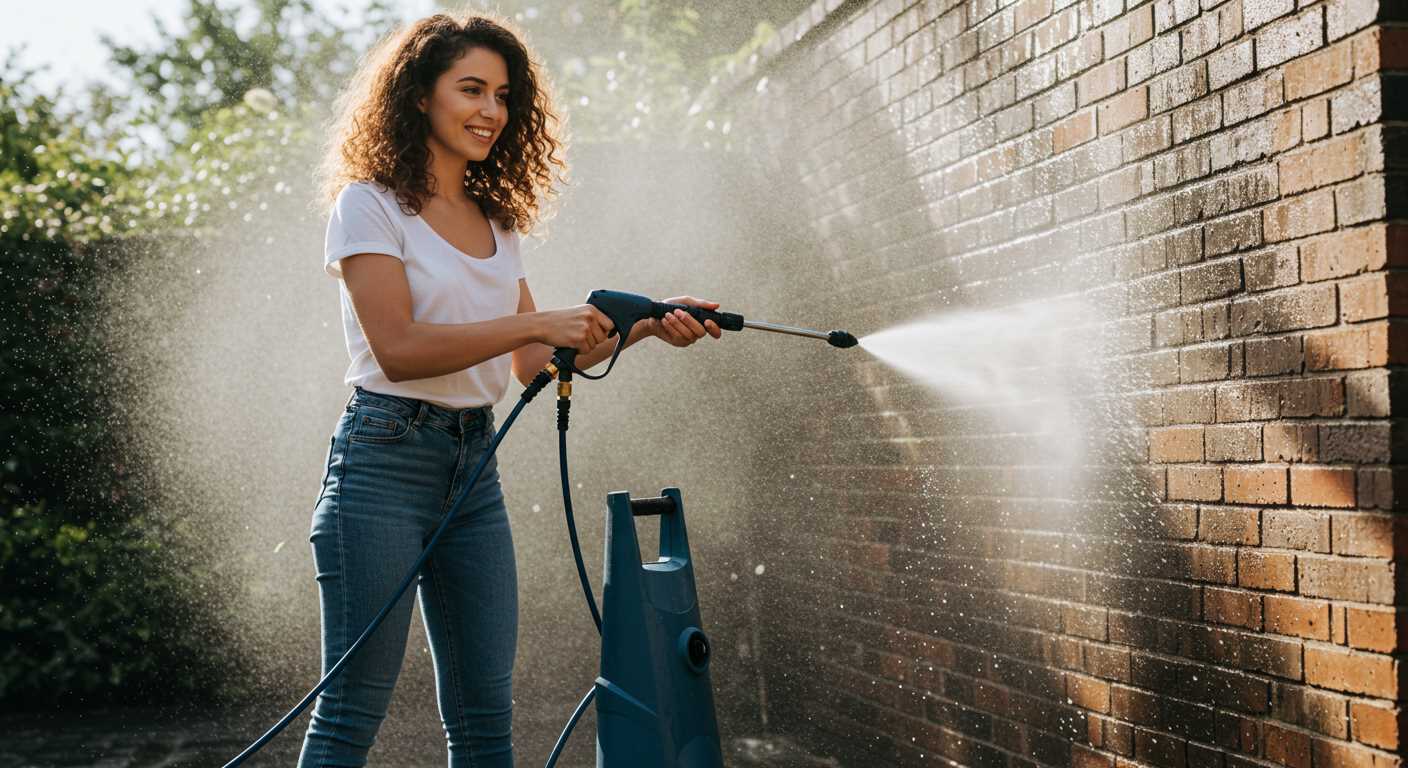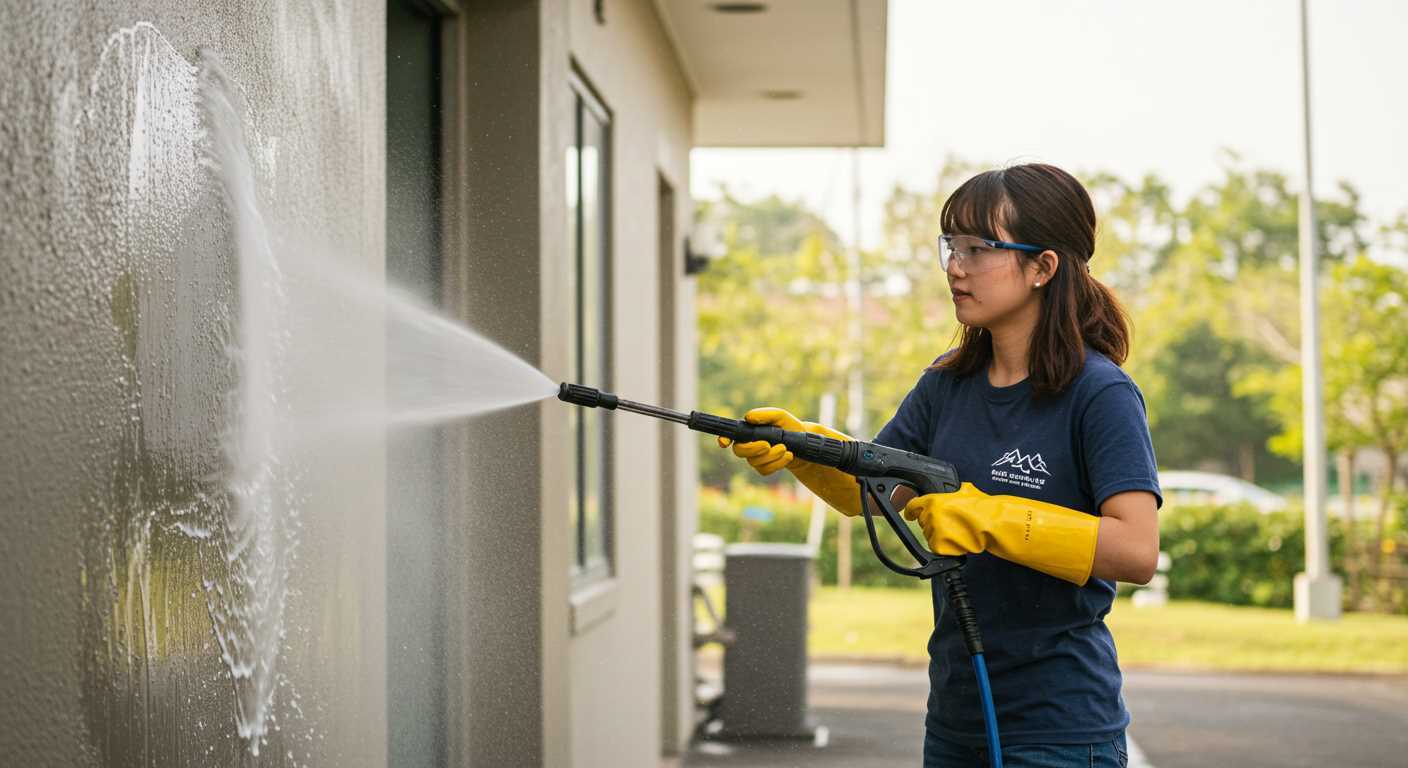



Prioritise models equipped with lithium-ion batteries for their longevity and effective power management. These devices typically deliver consistent performance, eliminating the pressure drops often seen in lower-quality alternatives.
Each unit operates via a motor that draws energy from its battery pack. This motor generates hydraulic force, accelerating water flow through a nozzle. The design of this nozzle is crucial; a narrow aperture enhances the water’s velocity, making it capable of tackling stubborn dirt and grime effectively.
Users should consider varying pressure settings, which allow for adaptability based on the cleaning task. Ratcheting the pressure too high for delicate surfaces may cause damage, while lower settings might suffice for less stubborn buildup.
The absence of cords grants a significant advantage in manoeuvrability, enabling you to reach tight spots without hassle. However, it is essential to ensure that the battery is adequately charged before commencing your cleaning tasks to avoid interruptions.
Maintenance plays a critical role in the longevity of your equipment. Regularly checking filters and nozzles will prevent clogs and ensure optimal functioning. A well-maintained unit not only performs better but also extends its operational lifespan.
In my experience, investing in quality units with robust features not only saves time but also enhances the overall cleaning process. Make informed choices, and you’ll find the right equipment tailored to your specific cleaning requirements.
Understanding the Battery Technology in Portable Cleaning Units

Investing in a portable cleaning unit requires a clear grasp of battery technology, as it directly influences performance and convenience. Opt for lithium-ion batteries; they offer superior energy density, reduced weight, and prolonged lifespan compared to traditional lead-acid models.
Key aspects to consider:
- Voltage: Higher voltage ratings, typically around 36V to 60V, enhance cleaning power and efficiency. This allows for robust water pressure, making tasks quicker and more effective.
- Capacity: Measured in amp-hours (Ah), a higher capacity ensures longer operational time. Aim for units with at least 5Ah for sustained usage without frequent recharges.
- Charge Time: Look for fast-charging options; some lithium-ion batteries can recharge in as little as 30 minutes, ideal for quick top-ups during longer cleaning sessions.
Consider the battery management systems (BMS) integrated within these devices. A reliable BMS protects against overcharging, overheating, and excessive discharging, ensuring the longevity of the power source.
Another practical feature is compatibility. Selecting a model with interchangeable batteries can be a savvy choice, allowing you to utilise the same power sources across multiple devices, maximising efficiency.
When purchasing, check user reviews regarding battery performance and longevity under real-world conditions. This feedback can be invaluable in identifying models that consistently deliver power and convenience.
The role of water pumps in cordless cleaning equipment operation
The performance of any cleaning appliance significantly relies on its water pump. In portable models, the pump’s primary job is to draw water from a source and then pressurise it. This pressurisation is fundamental for achieving the high flow rates necessary to effectively remove dirt and grime.
In battery-operated devices, the pump’s design typically incorporates a diaphragm or plunger mechanism. This choice allows for compact construction while maintaining power and efficiency. I have often noted that well-designed pumps deliver consistent water flow, which is crucial for effective cleaning across different surfaces.
Types of pumps used

Common types of pumps found in these devices include axial piston pumps and gear pumps. Axial piston pumps are often favoured due to their ability to maintain higher pressures and longer operational life. They also tend to be quieter, which adds to user comfort during operation.
Gear pumps, while less common, can also be adequate for lighter tasks. Their simplicity makes them easier to maintain, but they often fall short in delivering the high-pressure output required for tougher cleaning jobs.
Importance of pump maintenance

Regular maintenance of the pump is paramount for ensuring longevity and reliability. I recommend flushing the system with clean water after each use to remove any debris that could cause blockages. Additionally, checking for leaks and ensuring all connections are secure can prevent water loss, which directly affects performance.
Investing in quality pumps means greater efficiency and performance, so select models from reputable manufacturers. Proper care and timely maintenance will keep your cleaning gear functioning optimally for years to come.
How pressure is generated and maintained during use
To achieve optimal cleaning results, it’s crucial to understand how water is pressurised and sustained at a consistent level throughout operation. First, as the motor activates, it empowers the water pump, which draws water from the supply source. This pump rapidly compresses the water, creating a high-pressure stream. The design of the pump, often a diaphragm or axial design, plays a significant role in this process.
Maintaining pressure is equally important. Various pressure regulators are employed within the system to ensure that once the desired pressure is reached, it remains stable despite fluctuations in water flow or resistance from the nozzle. These regulators work by automatically adjusting the pump’s output based on the resistance it encounters, such as dirt or grime during cleaning.
Another factor is the nozzle design. By controlling the flow of water through different nozzle types, one can easily adjust how pressure is applied to a given surface. A narrower nozzle increases pressure while a wider one decreases it. This balance allows me to match the right pressure for various cleaning tasks, from delicate surfaces to tougher stains.
Battery management systems also play a role. Advanced battery technology monitors energy consumption and optimises performance, ensuring that the power supplied to the pump is sustained consistently during use. This interplay between the pump and the battery management ensures that regardless of the task, I can rely on steady pressure output, enhancing usability and effectiveness.
In summary, effective pressurisation is the product of advanced pump technology, intelligent regulation, and battery management, all working together to deliver a powerful cleaning experience without interruptions.
Comparing performance to traditional wired models

Based on my extensive experience, the performance of battery-operated machines can vary significantly compared to their wired counterparts. While convenience is a major benefit, the output pressure, measured in PSI (pounds per square inch), often tends to be lower. Most cordless types range from 600 to 1200 PSI, while wired versions can exceed 3000 PSI. This difference is crucial for demanding tasks such as heavy-duty concrete cleaning.
Flow rate analysis

The flow rate is another important metric to consider. Battery-operated devices typically have a flow rate of 0.5 to 1.2 GPM (gallons per minute). In comparison, wired units often achieve 1.5 GPM or more. A higher flow rate allows for quicker cleaning and better rinsing capabilities, which impacts overall cleaning efficiency.
Runtime and usability
While traditional models rely on continuous power from an outlet, the runtime of battery-powered units is limited by battery capacity. Most rechargeable batteries last between 20 to 60 minutes of constant use, which may not suffice for larger areas without recharging. On the other hand, the absence of cords increases mobility and ease of use in hard-to-reach spots. This makes units with a short runtime more practical for lighter jobs or quick touch-ups.
When optimising your choice, it’s wise to evaluate your cleaning needs against these performance metrics. If tackling larger, tougher jobs frequently, a wired option might better align with your requirements. For occasional light cleaning tasks, the freedom of portable devices is often more than sufficient.
Maintenance Tips for Cordless Pressure Washer Longevity
Regularly cleaning the filter is crucial for optimal performance. After each use, remove the filter and rinse it under water to eliminate dirt and debris. This prevents clogs that can reduce water flow.
Inspect seals and connections frequently for wear and tear. Replace any damaged seals promptly to prevent leaks and maintain efficient operation.
Charge the battery correctly by following the manufacturer’s recommendations. Overcharging or leaving the battery depleted can shorten its lifespan. Aim to store the battery in a cool, dry place to preserve its health.
Check hoses for kinks or cracks. Store them flat and avoid sharp bends to ensure durability. If you notice any damage, replace the hose immediately to prevent system failures.
Utilise the correct cleaning agents. Some chemicals can degrade internal components. Always refer to the guidelines for recommended cleaning solutions.
Perform regular inspections of the motor. Ensure that it is free from dust and debris. Cleaning the motor contributes to heat dissipation and enhances overall performance.
Refer to the user manual for seasonal maintenance tips, including any necessary lubrication. Proper lubrication can help extend the life of moving parts.
| Maintenance Task | Frequency |
|---|---|
| Clean filter | After each use |
| Inspect seals and connections | Monthly |
| Check hose condition | Before each use |
| Clean motor | Every three months |
| Battery charge check | Weekly |
Following these guidelines will help ensure your device operates smoothly and lasts longer, saving both time and money in the long run.
Common applications for cordless pressure cleaners at home

For outdoor spaces, these devices excel in cleaning patios and driveways. Their portability allows access to tight areas, making them ideal for removing dirt, algae, and stains.
Vehicle maintenance benefits from their versatility. I regularly use these tools to wash cars, ensuring that hard-to-reach spots are not overlooked. They effectively remove road grime and other residues without damaging the paintwork.
Decks and garden furniture are also prime candidates. I’ve found that these cleaners restore the original brightness of wooden surfaces, making outdoor seating areas inviting. Regular use can help prolong the lifespan of garden furniture.
When entertaining, tidying up is essential. A quick clean of outdoor grills and fire pits ensures a pleasant environment for guests. These devices remove grease and residue swiftly, saving time and effort.
For those with pets, maintaining a clean environment is critical. Removing pet stains from patios or outdoor areas is straightforward with these tools, making it easier to manage cleanliness without heavy scrubbing.
Lastly, seasonal preparations benefit significantly. Cleaning gutters and external windows can be accomplished without the hassle of cords, ensuring safety and efficiency during maintenance tasks.







